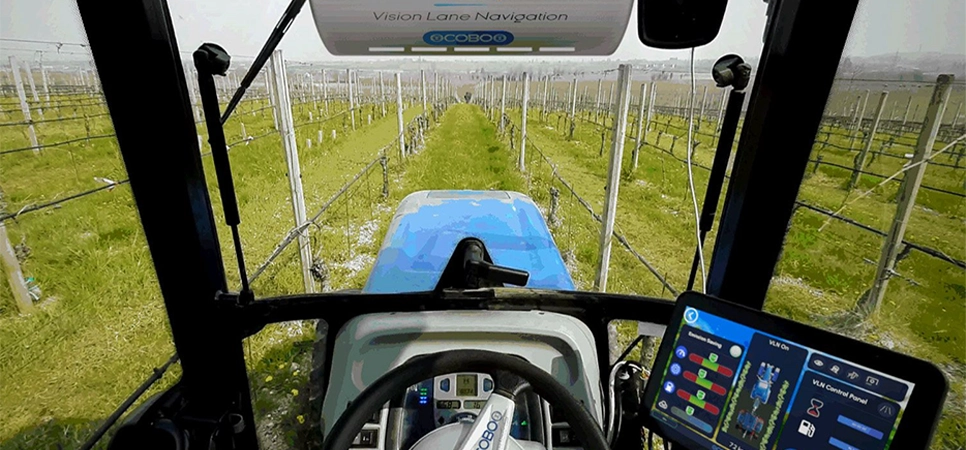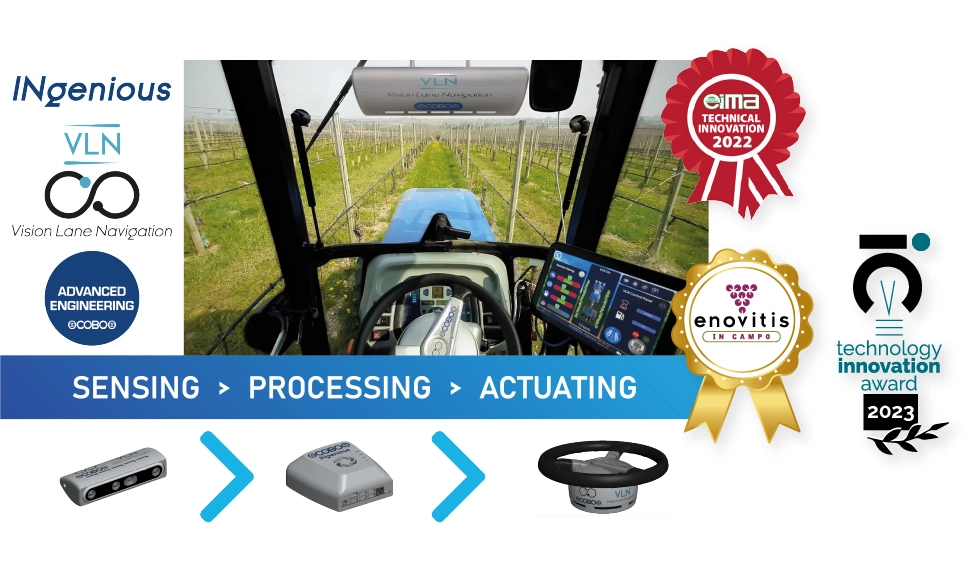VLN (Vision Lane Navigation)
SYSTEM BASED ON ARTIFICIAL INTELLIGENCE
Allows automatic driving in the lanes of a vineyard

Just as the eyes and brain in human beings, the VLN COBO system contains the essential elements to be able to acquire images, process them, decide how to behave, thus making automatic driving possible in the narrow lanes of vineyards, without requiring satellite antennas, GPS signals, RTK corrections and other sensors on board the machine or in the cultivation.
What does the innovation consist of?
The images are processed by an Artificial Intelligence system, which can learn and improve each time the system is used. The system was developed using the Digital Twin technique; tractor, implement, and vineyards are initially digitized to allow for simulator testing; once the project’s expected level of performance is reached, the system is installed on the physical twin to perform real field tests and thereby activate a tuning and final tuning loop.
Expected benefits
The system does not require GPS signal and associated RTK corrections to have the necessary accuracy, nor does it require the addition of lidar, radar, and ultrasonic sensors to enable navigation within the narrow lanes of vineyards.
The operator through the VLN system can rely on the precise and safe automatic guidance within the rows of vineyards and orchards, being able to choose whether to proceed constantly in the center of the row or on either side of the row, depending on the type of implement and processing to be carried out, the size of the operating machine and space available in the cultivation.
COBO’s VLN system is simple, non-invasive in installation and very functional during work, can be installed on any type of tractor, harvester, sprayer or other self-propelled vehicle, designed to operate on farms with row crops or semi-structured layouts (defined lanes and paths), is capable of transferring the benefits of AI, greater automation and safety to workplaces, either when integrated by OEMs into new vehicles, or with kits to be installed on vehicles already in service or on the market.
An important and significant contribution to innovation and sustainability for the next generation, but at the same time able to make even existing operating machines more precise, efficient and safe.

